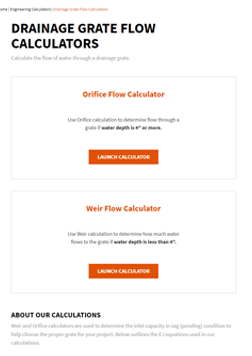Drainage Grates, Frames and Curb Inlets
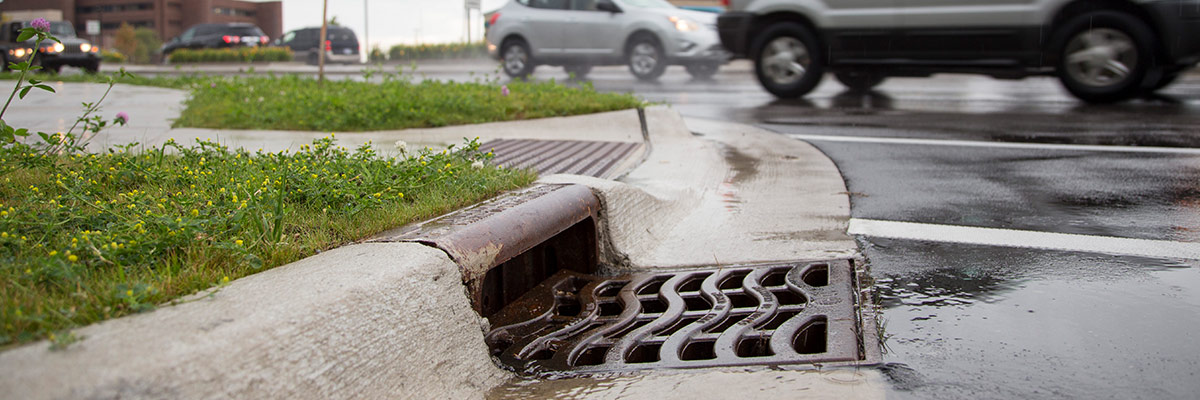
Innovation to Meet Customer Needs
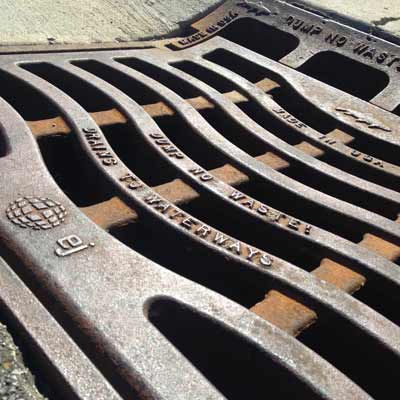 Without water, there would be no life on our planet, but in today’s urban environment, water presents a double-edged sword. Known to chemists as the “universal solvent,” water must be channeled away from airports, highways, ports, and other facilities, where its presence becomes a safety issue and a maintenance challenge.
Without water, there would be no life on our planet, but in today’s urban environment, water presents a double-edged sword. Known to chemists as the “universal solvent,” water must be channeled away from airports, highways, ports, and other facilities, where its presence becomes a safety issue and a maintenance challenge.
While manhole assemblies control entry to the subsurface infrastructure they protect, drainage grates by EJ welcome water. EJ began manufacturing drainage grates soon after it began manufacturing manhole assemblies; somewhere in the world sit drainage grates that are more than 90 years old.
All drainage grate assemblies (the grates and the frames that surround them) perform the same tasks: They capture water runoff and transport it to a tube or pipe, reducing ponding. A linear system of grates can capture a vast volume of water from a site—one reason they are favored for airports and highways.
Designing Water Management Plans
Water management plans for a site are some of the most complicated designs. You must ensure that there will be no loss of value and that the water will be collected from the ground and directed into a pipe as soon as possible. As soon as water builds up, you have the risk of erosion or hydroplaning.
If they took the time to look for them, drivers, pedestrians, and cyclists would spot drainage grates on just about every street curb. It is a common misconception that all drainage grates are the same because they basically do the same thing—this is not the case.
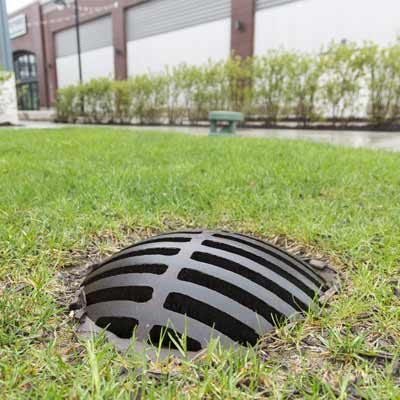 Evolving Grate Designs
Evolving Grate Designs
In fact, drainage grate design has evolved to adapt to an urban environment with more constructed areas—such as footpaths, roadways, and parking lots, which are all impervious surfaces restricting effective drainage of rainwater.
In response, modern drainage grates capture water more efficiently. This means larger openings, inlet configurations to catch moving water by vanes or waves, more efficient designs to reduce the amount of iron needed to maintain the same efficiency, and greater capacity to withstand heavy loading from airplanes, heavy machinery, or trucks. As an example, EJ makes extra heavy duty airport rated grates that can support loads up to 200,000 pounds.
Security and Ease of Maintenance
In keeping with the modern world’s concern for infrastructure security and ease of service, EJ offers security options on several grate models. This includes bolting, cam lock, and slam lock variations.
Drainage grates may include hinges and assisted openings. In addition, EJ manufactures decorative trench options that integrate well with landscaping and public spaces, grates with anti-skid properties, and grates that grab water as it flows down a hill.
The Fallacy of the Generic Grate
Even with all these variations, some customers still believe that a grate is a grate. In fact, Seger finds this to be the biggest misunderstanding he encounters: A grate is only a piece of iron with holes. "Someone will say that he or she simply needs something to stop water pooling," Seger says. "Just give me a standard grate."
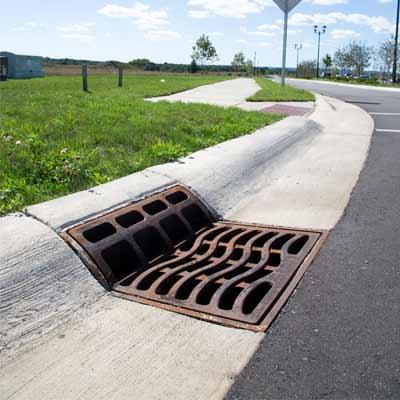 "There is, however, no such thing as a standard grate," Seger explains. "A customer cannot be successful by simply picking a grate off the shelf. Instead, we ask our customers these basic questions:"
"There is, however, no such thing as a standard grate," Seger explains. "A customer cannot be successful by simply picking a grate off the shelf. Instead, we ask our customers these basic questions:"
How is the site used?
How much water will fall on the site?
How fast do you want the water to drain?
What is the geography of the site where you are installing the grate?
"Properly addressing drainage requirements demands an engineering exercise for each drainage grate installed," Seger emphasizes. "The need drives the design. A classic beehive grate—about the size of a basketball—drains high-debris, non-traffic areas such as a backyard well. Draining a baseball field, however, has very different considerations than draining a residential street."
Balancing Grate Characteristics
Some engineers emphasize that water and debris be removed from streets and highways as quickly as possible and prefer wide grate openings. Others need to balance water drainage with traffic from bicyclists or pedestrians wearing high heels.
To aid customers in specifying the best grate solution, our website includes a flow calculator. EJ sales staff also frequently presents "Lunch and Learn" seminars at customer locations, as well as professional development seminars at trade shows. We also invite various customers to visit the EJ facilities, which can include foundry tours and discussions. Furthermore, EJ offers installation instructions for each of its grating systems.
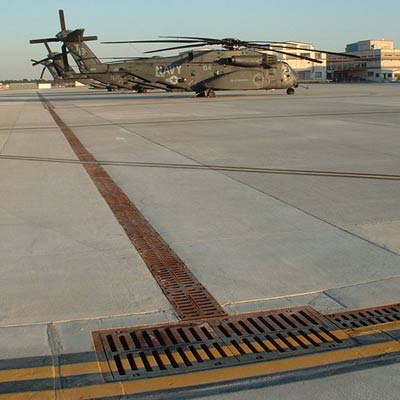 Airports and Ports Share Needs
Airports and Ports Share Needs
Airports and ports prefer linear drainage systems. With their safety concerns and the need to move large, expensive machines across these sites, these facilities slope their surfaces to send water to the linear systems as fast as possible.
A recent installation of linear trench grates at the at U.S. Marine Corps’ Camp Lejeune shows the scale of airport trench grating and illustrates EJ’s experience of meeting unusual customer requirements.
Located in coastal North Carolina, Camp Lejeune required about 10,000 linear feet (almost two miles) of trench grating for its airfield taxiway and apron expansion. To meet the airfield’s specifications, EJ designed and manufactured a new trench frame and grate 51 inches wide, including the design of grates with a 45-degree bend. To complete the work, 5,000 pieces were placed along the airfield.
The expansion project relates to new runways needed for the V-22 Osprey aircraft. The trench grate and frame are composed of ductile iron, designed for extra heavy-duty loads (proof load tested to 100,000 pounds).
Agency Requirements
LEED® (Leadership in Energy and Environmental Design), an internationally recognized green building certification system, provides third-party verification that a building or community was designed and built using strategies aimed at improving environmental quality across crucial metrics.
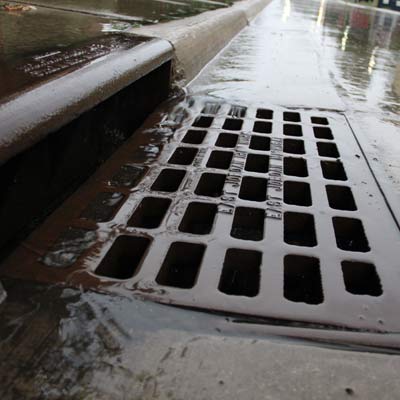 The sales team at EJ routinely assists customers in qualifying for LEED® credits on new projects. A majority of EJ products help our clients qualify for LEED credits under the Materials and Resource category or Recycled Materials section within the ratings guide. Alternatively, credits may be earned through the Sustainable Sites category and the Storm Water Design section.
The sales team at EJ routinely assists customers in qualifying for LEED® credits on new projects. A majority of EJ products help our clients qualify for LEED credits under the Materials and Resource category or Recycled Materials section within the ratings guide. Alternatively, credits may be earned through the Sustainable Sites category and the Storm Water Design section.
EJ castings, manufactured entirely in the United States from gray iron, conform to American Society for Testing and Materials (ASTM) A48. For ductile iron, it conforms to ASTM A536. The material used to produce the castings has a minimum recycled content of 85 percent. Approximately 20 percent post-consumer and 80 percent post-industrial materials comprise that 85 percent recycled content.
Innovation to Meet Customer Needs
We complement our extensive in-house knowledge with third-party research and input from industry experts. We also ensure that our products perform optimally through finite element analysis, in-house tests on materials, and load tests on product prototypes.
This commitment to meeting customer requirements extends through our unique Product Lines:
- Access Covers, Grates, and Frames
- Streetscapes and Urban Designs
- Access Hatches
- Fabricated Metals
Learn More
Talk to an expert at EJ to find out how the innovative solutions by EJ can work for your next project. Contact us today or schedule a Lunch and Learn.
